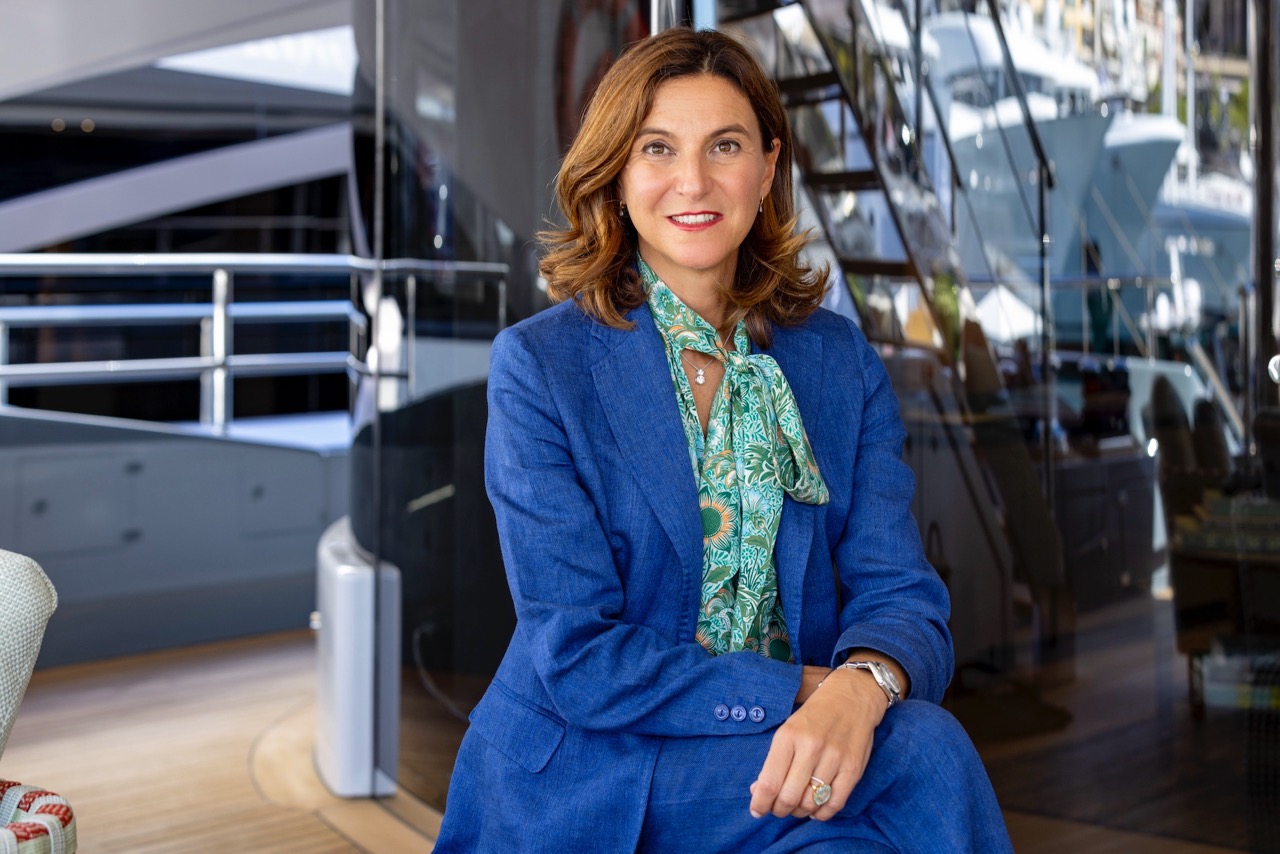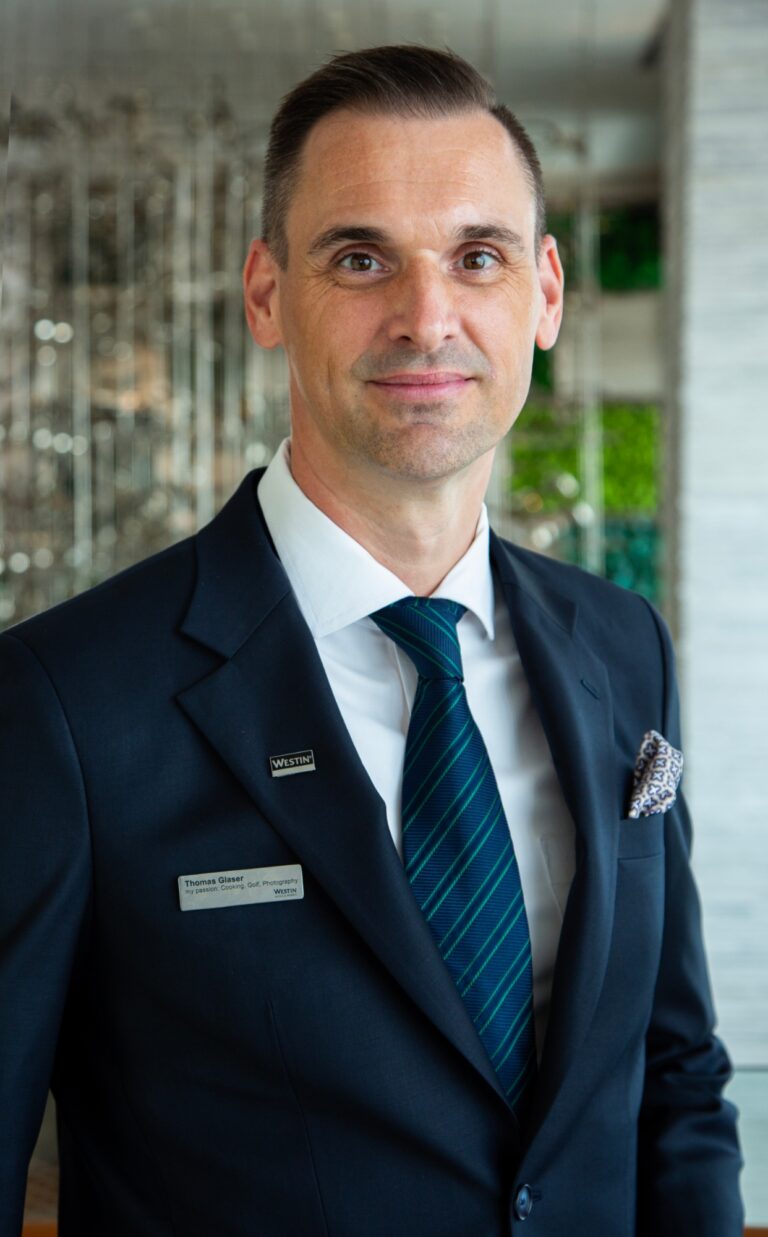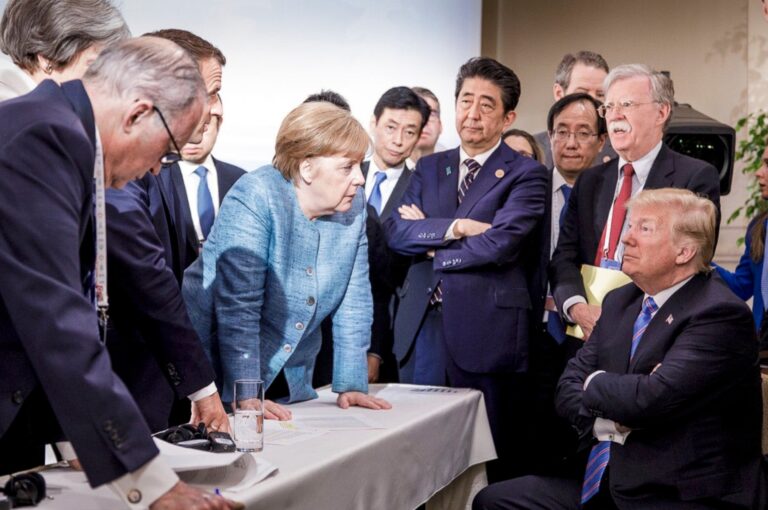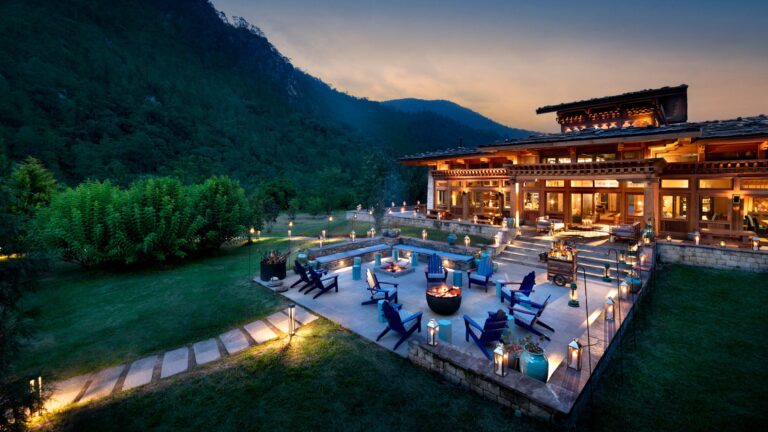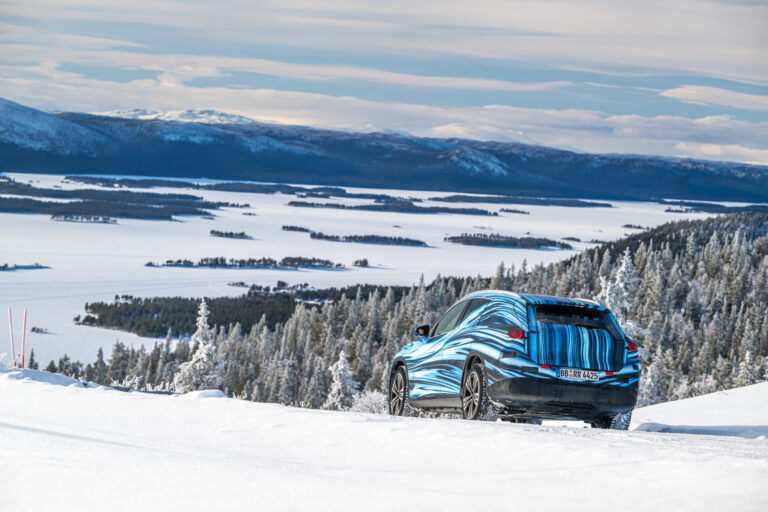Giovanna Vitelli Outlines the Success of the Family-Owned Azimut|Benetti Group – Part 2

How are you continuing to drive forward with your focus on eco-friendly solutions and sustainability initiatives?
We have believed in this path for a long time and are committed to meeting the targets set by both the International Maritime Organization (IMO) and the European Union, both of which we strongly support. These objectives are essential, and it would be disappointing if Europe were to abandon them under pressure from the American government, which has shown little real interest in this area.
While it is true that the European approach – with its ambitious legislative goals and tight timelines – has led some companies to respond superficially or resort to greenwashing, this should not distract us from the critical importance of maintaining a strong focus on reducing emissions.
On one side, our R&D department is focused on the best solution for tomorrow. However, the main approach has been to concentrate on providing the best solutions today, in order not to talk only about the future. We partnered with companies developing state-of-the-art technology, so we can share figures and tell people how they can reduce consumption and emissions, and therefore money.

What aspects are you focusing on?
We focus on three main pillars: reducing weight, developing high-efficiency hulls, and employing innovative propulsion systems.
The efforts for reducing weight led to a significant investment in internal production and the use of carbon fibre. In Avigliana, we have a huge oven to post-cure carbon fibre we produce in-house. For yachts 60ft and above, all our superstructures are in carbon fibre, which alone means 30 per cent less weight. Secondly, we’re testing the use of cork instead of teak to also reduce weight. The Seadeck offers the option of cork decking.
The second big element is hull shapes. Our R&D team has focused on designing good, efficient hull shapes that can improve efficiency by 15 per cent or even more. Some of our best designs are the patented hull on Azimut’s flagship 38m Grande Trideck and the one for the latest Seadeck.
The third pillar is propulsion. The discussion here is very similar to cars. Is electrification the best possible solution? Probably not as a whole, but yes, during this transition phase. For this reason, our current focus is on combining hybrid architectures with the use of biofuels, and more specifically, HVO (Hydrogenated Vegetable Oil), as a concrete and available solution.

Can you provide examples of your current propulsion options?
Azimut has continued to invest in electrification and is offering distinct levels of electrification, each tailored to the yacht’s size, market segment and owner’s needs: from Zero Emission Hotel Mode to Mild Hybrid and Full Hybrid. The Seadeck 7, for instance, is the first full hybrid yacht in its segment, as it features the first installation of a hybrid Volvo Penta IPS propulsion. Thanks to state-of-the-art sustainable solutions, it can reduce CO2 emissions by up to 40 per cent over the course of a year of average use.
As a result of the combination of extensive use of carbon-fibre, high-efficiency hulls, and innovative propulsion systems, half of Azimut’s range falls under the ‘Low Emission Yachts’ family, meaning they reduce consumption and therefore emissions by 30 per cent compared to similar vessels featuring a traditional hull and shaft
line propulsion. We believe this is a significant, tangible, proven achievement and the most serious approach.
Finally, as part of our comprehensive approach to low-impact yachting, we’ve partnered with ENI – Italy’s leading energy group
in biofuel production – to fully transition to HVO, a biofuel derived from agricultural sources that do not compete with the food-supply chain, capable of achieving up to a 90 per cent reduction in emissions on a well-to-wake basis. Today, we use it for testing, deliveries and transfers to boat shows. We’ve also verified that all our yachts are fully HVO-compliant.

How successful have these options proven?
With the combination of moving to an available fuel, HVO, and by focusing on weight, hull shapes and electrification in general, I can proudly say we’re offering real solutions available today. Hydrogen, methanol, ammonia and alternative fuels in general are technologically possible, but they’re not always applicable to any size of boat, and at this stage are not a widespread option.
They are a fascinating alternative that we’re closely looking at with our R&D department, but not a widely applicable solution for today. I believe legislation might become stricter, so we need to be prepared. We need this technology shift in our yachting world, the same way the car industry needs it, although yachting is a very small player in terms of emissions.
Although some of the current generation of owners are not so concerned about this topic, the stakeholders and the new generation of owners are. I remember a story about a potential client coming to a boat show with his family and telling me he was thinking about buying a boat from another shipyard, but then the 20-year-old daughter said to the father, “No, we should go with Azimut because they are truly investing in green technology.” That was the sign for me that the new generation is much more aware.

Is the Seadeck 7 Azimut’s most eco-friendly offering?
Yes, it’s the epitome today. The Volvo Penta IPS hybrid technology is not yet for sale because it’s still under testing and will only be available on the market in 2026. It’s expensive, but the hybrid propulsion is only responsible for a small part of the emission reductions. Most of the savings are due to all the other technology and materials, so it’s a good solution even without the hybrid system.
What about Benetti’s eco-friendly advancements?
As Seadeck is for Azimut, B.Yond is Benetti’s most eco-friendly production series, while the 108m Luminosity is one of the world’s largest hybrid yachts. Overall, the Benetti fleet can operate with hybrid propulsion, and we currently have 10 yachts under construction with hybrid solutions. However, we’re not focusing only on propulsion, because consumption on megayachts is much more related to onboard systems.
These yachts don’t cruise so much, so the focus is on air-conditioning, lighting and so on. We’re moving towards a new system of air-conditioning that reduces consumption by 50 per cent. We’re doing a lot of studies, including with AI, to improve power management, so that, for example, lights are turned off in cabins when no one is there. We’re looking at intelligent systems that study your behaviour – such as the temperatures you like in your cabin, suitable temperatures when you’re not in the cabin – to drastically cut your bill.
How do owners know what’s being achieved?
To make all this clear, we’ve been working a lot with indexes. For instance, when you buy a washing machine, you have labels – A+, A++ and so on – that tell consumers the efficiency grade. If you want to buy a car, you open a magazine and you can compare one car’s consumption to another’s.
I believe it should be the same in yachting. Today, there are two indices, YETI for the big yachts and SEA Index for the smaller segment, and we’ve been using both. We collaborate with Lloyd’s Register and other third parties to certify all our yacht consumptions; this is not marketing. I’ve been inviting the industry to follow this approach, so it becomes like other industries. We need a professional approach, transparent communication and certifications by third parties, so it’s clear for the consumer.
We’re in a transition phase, but eventually, I can say that Seadeck is eligible for the SEA Index three stars. It can give you a clear, immediately recognisable parameter. Benetti’s 67m Kasper has a three-star index. Little by little, if such a rating becomes part of a customer’s request, it will push shipyards in that direction. There will be a common, independent rating instead of shipyards just saying they’re green.

You have an extensive network of dealers across Asia, but no regional company headquarters. Is this a deliberate choice?
Actually, we do. Our long history in Asia was due to the vision of my father. By the 1990s, we had a Hong Kong-based Benetti customer buying a minority stake in the group. From early on, Asia was a focus and that partnership with a Benetti client helped accelerate our entry into markets in Asia.
It’s a long-established venture. With Azimut, we have about 10 dealers covering the whole of Asia from Japan, mainland China, Hong Kong and Taiwan to Singapore, Thailand, the Philippines, Vietnam and Indonesia in Southeast Asia. We cover the whole spectrum of opportunities in Asia, as we believe in a strong dealer network.
Our dealers are headed by entrepreneurs, such as Mr Takayuki Nozawa, President and owner of Yasuda Group in Japan. Our dealers are deeply rooted in the local economic and cultural environment, providing services for their covered areas, so it’s a very diverse organisation with key people who are not only managers but entrepreneurs. They talk to our prospects and customers at the same level. We believe in this model, which is why we’ve been supporting long-time dealers and establishing new dealers.
Tam Son Yachting in Vietnam is a relatively recent appointment and doing very well. More recently, we appointed Europa Yachts for Indonesia and Short Marine for all of Australia, so we believe we have a good mapping as they complement existing distributors.
On top of this framework, we have dedicated people based in Asia, coordinating the sales and marketing network and supporting local dealers, including for after-sales service. Being in a region that’s so spread out, we have an on-site, mobile regional structure for both Azimut and Benetti. We used to have offices in Shanghai for Azimut and in Hong Kong for Benetti. We kept the people, but we didn’t feel the need for offices. We still have people based in the region, but they travel around because they support the network.

How would you describe the Asia-Pacific market and its importance to Azimut|Benetti Group?
It’s key. The overall Asian market is very fond of Azimut flybridges. Clients here like the design and the volume that the flybridge provides, with a lot of interior space and different socialising areas. Azimut’s Grande range has been doing very well and it’s a fact that the average size of yachts sold in Asia has been growing.
Compared to decades ago, when the Asian consumer was asking for a dedicated layout – such as our Azimut Dragon series – today I see a new generation of more cosmopolitan customers. They don’t necessarily want a completely different product, but are more inclined toward international design and lifestyle, while still appreciating some layout customisations.
Very often, they don’t want a saloon and a dining area but an all-in lounging area, maybe with low tables, so more socialising areas. Unlike in the US, we don’t sell open galleys in Asia because the kitchen should remain separate. In terms of layout, there are still specific requirements and customisation, but I’d say there’s a move towards contemporary global aesthetics.
‘Made in Italy’ is very much appreciated, especially how it has evolved. It’s now cleaner and more harmonious, which is typically Asian, especially Japanese, but with a little bit more decoration and ‘warmth’ than the minimalistic approach.
How does the Asia-Pacific market compare to others?
We launched the Seadeck 7 in Asia at this year’s Singapore Yachting Festival and although we already have parameters from the rest of the world, it’s still very fresh in this region. The trend towards bigger boats is like the rest of the world. When we talk about Asia, there are many different countries and facets.
Chinese customers overseas remain active, but mainland China is still not a big market due to cultural, infrastructure and coastline regulations. A few years ago, when some of our competitors sold partly or fully to Chinese groups, they announced they would start production in China for the local market. This never happened.
In Asia, all of us should work on fostering the yachting culture, which has moved forward but not as much as in Russia, for example. From the time Russia opened to the Western world, it instantly jumped into the marine lifestyle.
More time is needed in Asia and probably better crew quality. There’s a great opportunity for well-paid jobs in this sector and I believe the area has the manpower, but high-quality training is needed.

Is your current focus on Asia influenced by the US-led trade war?
We’ve been experiencing an interesting position in recent years. The fact that we could organise this year’s Azimut Asian Rendez-Vous in Japan, with 10 yachts on display, was very encouraging. We’ve seen an increase in sales and interest, so we want to boost it. Hopefully, we won’t have to substitute the US, because it represents 25-30 per cent of our global market. A major part of our sales in the US are 24m-plus yachts that aren’t normally US-flagged, so it’s not such a big issue.
In the smaller segment, fortunately, we are a truly premium brand in the US, so we believe this perception will make the difference. It’s like a Ferrari car or an Hermes bag: customers will be ready to buy even if there’s a 10 per cent increase in price.
Can you give us an update of Azimut|Benetti Group’s facilities and any changes?
We recently made some acquisitions. We expanded in Tuscany, around Pisa and Massa. We created a hub for building fibreglass and another for building small yachts in steel and aluminium. Previously, these were normally purchased externally or outsourced. The decision was made not to buy suppliers but to control quality by transforming those areas into production sites.
We’ve invested in 100,000sqm close to Avigliana, Piedmont, to be ready for potential new activities. Even in the boom years, the strategy was to expand our facilities. Whenever it was possible, we enlarged all our production sheds in Avigliana, Livorno and Viareggio. We believe in organic, internal growth by building on what we have.
Refit is another focus and area of expansion. In Livorno, we’ve invested €12 million for Lusben to become one of the big refit players in southern Europe, competing with France and Spain, including in the 100m-plus yacht segment and sailing yachts, due to the addition of a dedicated shed for the booms in Lusben’s Livorno facility.
For more information, visit azimutyachts.com, benettiyachts.com.
This article was first seen on YACHT STYLE.
For more on the latest in luxury yachting reads, click here.
The post Giovanna Vitelli Outlines the Success of the Family-Owned Azimut|Benetti Group – Part 2 appeared first on LUXUO.
